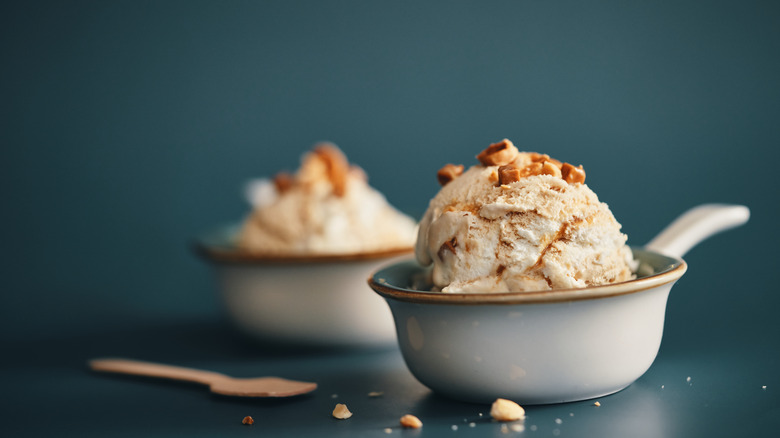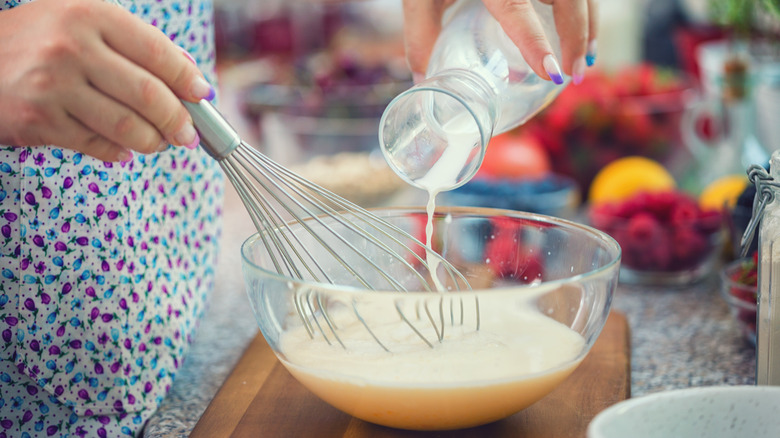Avoid The Scrambled Egg Effect When Making Homemade Ice Cream
Making homemade ice cream is something that everyone should try at least once. Not only is it a fun and creative way to express yourself and create your perfect flavor combination, but it is also relatively easy to do. The hardest part of the process occurs near the very beginning: Making the custard that will become the ice cream base. It is not uncommon to find that you have accidentally scrambled the eggs, throwing off the texture and consistency of the custard. If this issue has you swearing off homemade ice cream endeavors, know that it is usually due to high temperatures and can be easily avoided. Let's dig into the science behind why this happens and how to prevent it.
In order to make a custard base for your ice cream, you must heat milk, cream, and sugar on a stove and then whisk in egg yolks. The problem is that eggs begin to coagulate — or scramble — at just about 144 F, especially when introduced to heat too quickly. This is far lower than even the heat of a medium-low flame, which for most stoves is around 250 F minimum. In short, you can't simply drop your eggs into your hot custard base and hope for the best; you need to use a special technique that will gradually warm your eggs to the desired temperature without shocking them.
How to prevent curdling
The primary technique for achieving a successful custard is called tempering. This is the simple act of adding a small amount of the hot liquid base to your room-temperature eggs and whisking rapidly to prevent the eggs from having the opportunity to scramble. This will slowly raise the temperature of the eggs while also introducing other ingredients, like milk, that act as a sort of buffer to prevent the eggs from coagulating. From here, you can pour the eggs into the larger mixture.
While the eggs will now be far less likely to scramble, it is still a possibility, so be sure to take extra precautionary measures, such as keeping the heat low and stirring continuously. Even with these precautions, the worst-case scenario can still come true. If you sense your custard is about to curdle, don't panic. Just follow our Hail Mary tip for fixing scrambled custard, and you'll be back on track.

